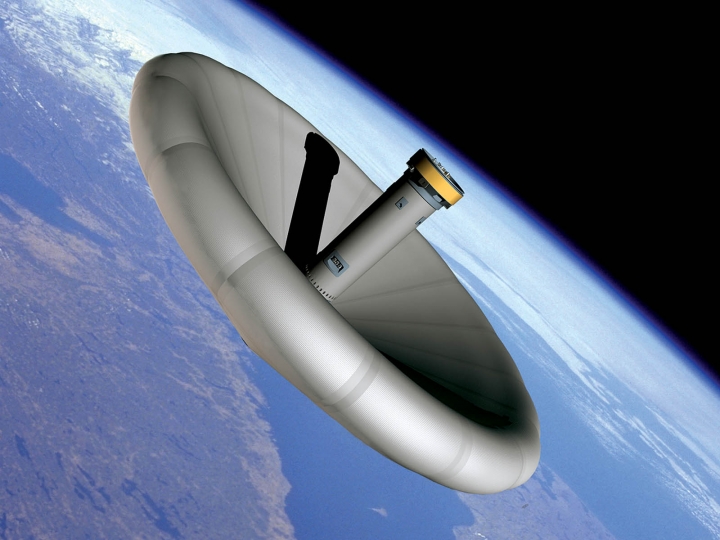
NASA seeking partners to help develop inflatable structure technologies for Mars mission and other projects
NASA’s planned mission to Mars will require sending structures into space for supplies, systems and people. Ridge, metal structures are expensive to launch and lack the needed space. Inflatable structures are much lighter and can provide more than three times the space.
NASA wants to work with a partner to advance inflatable structure technology, according to a NASA announcement. The goal of the project is to more accurately predict structure performance through improved models and structural sensing integrated directly into the flexible materials that make up inflatable systems.
Inflatable or expandable structures are made of synthetic fibers like Kevlar and Vectran woven into fabrics and flexible tubes, and are launched in a tightly stowed configuration and then inflated and pressure-stiffened when needed.
Two examples of inflatable systems for space exploration that are currently undergoing testing are the Bigelow Expandable Activity Module (BEAM) and the Hypersonic Inflatable Aerodynamic Decelerator (HIAD).
After delivery to the International Space Station, the BEAM was inflated to provide temporary storage. The module has performed well and initial tests indicate that it can fill the role of a more traditional metal module, according to NASA.
To meet the payload requirements for sending humans to Mars, NASA needs an aeroshell decelerator that is much larger than can fit into current rocket configurations. HIAD solves this problem by being stowed in a tight package and then inflating to five times its stowed size prior to entry into Mars’ atmosphere.
In pursuing these types of inflatables technology advancements, NASA and a partner will develop new and improved inflatable designs for habitat modules for space missions. The same technology will also benefit terrestrial applications by providing improved fabric design options. These applications include, but are not limited to, quickly deployable-durable shelters, hyperbaric chambers, deployable shock absorbers, storm surge protection devices, pipeline fluid plugs, and fluid stowage containers.
To pursue this opportunity and to learn more about the project read the full announcement HERE.